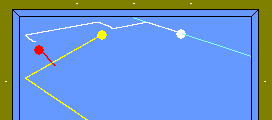
To score a point, the cue ball must contact the two object balls; before contacting the second object ball, the cue ball must contact three rails (not necessarily three different rails.) Three-cushion billiards is the big game, the one for good players. It is quite tough as even the best players miss about half of what they try. As Robert Byrne puts it, "When you make a point in three-cushion billiards, you know you've done something. Five points in a row fills a beginner with pride."
Top-ten players in the world of three-cushion billiards.
| 1 | Blomdahl, Torbjorn | Sweden | |
| 2 | Jaspers, Dick | Netherlands | |
| 3 | Sayginer, Semih | Turkey | |
| 4 | Zanetti, Marco | Italy | |
| 5 | Caudron, Frédéric | Belgium | |
| 6 | Carlsen, Tonny | Denmark | |
| 7 | Sanchez, Daniel | Spain | |
| 8 | Nelin, Dion | Denmark | |
| 9 | Tasdemir, Tayfun | Turkey | |
| 10 | Bedoya, Jaime | Colombia |
In the top-60, there are 9 players from Belgium, 7 from the Netherlands, 4 from Turkey, Denmark and Colombia, 3 from Mexico, Germany, France and Greece.
This ticky is a very easy shot. It is also important as it has many variations.

Shots where three consecutive rails are hit with running English are called natural. They are easier than shots involving reverse English and they are the kind of shots you look for first.
Shots are not necessarily hard because the cue ball must travel a lot. Shots of this kind are easy:
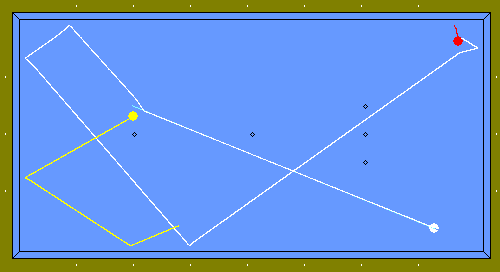
This one is less easy mostly because it must be hit harder due to the fairly long path. As Byrne notices, "on some shots, the cueball must travel only a few inches, on others more than forty feet. [...] Most pool shots are made within the blink of an eye, while in billiards the outcome is often in doubt for as long as seven or eight seconds." The following shot is less easy mostly because it must be hit harder due to the fairly long path.
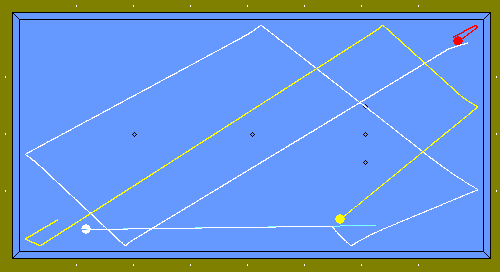
The following shot is not so hard...
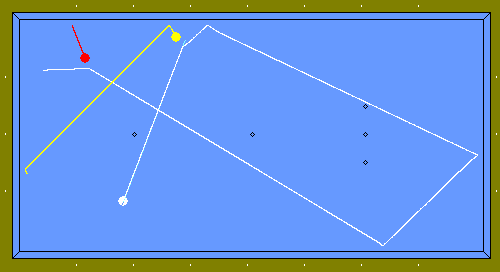
... but this one is much easier because the error margin is quite large. Balls in corners or next to rails are called big balls, because you can hit them directly or with a rail so the effective target is much larger than the ball itself.
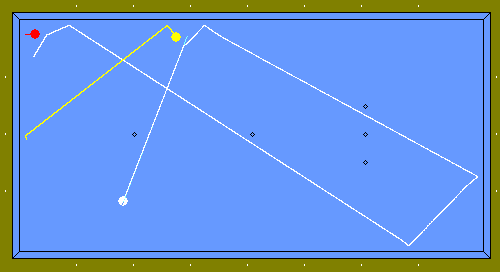
As Magritte would say: this is not a big ball. For this three-cushion shot to score a third rail must be hit just before the red ball. Therefore the red is not big. However the third rail may be on either side of the ball, this is thus a "two-way" shot.
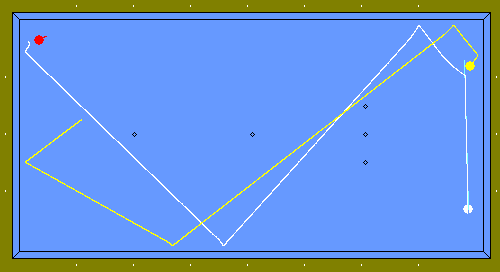
If the yellow ball is further from the rail, it is possible to play inside (on the side of the object ball close to the rail) while the previous shot had to be played outside (on the side of the object ball far from the rail.) Then the red is big as three rails have already been hit before the cue ball reaches it. It is quite common that when balls are moved a little bit completely different shots can be made.


Unlike pool tables, billiards tables do have corners. Shooting into a corner with reverse English allows the player to meet the three-rail requirement at once.
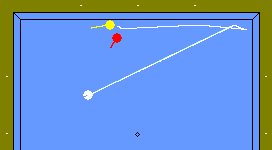
When you want the cue ball to hit two rails in a corner, which rail is hit first is very important. Hit the wrong rail first and you miss by miles. The English is reverse and the direction will be dramatically modified and the speed killed by the reverse English.
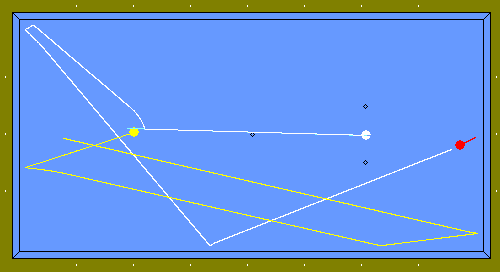 What should have happened |
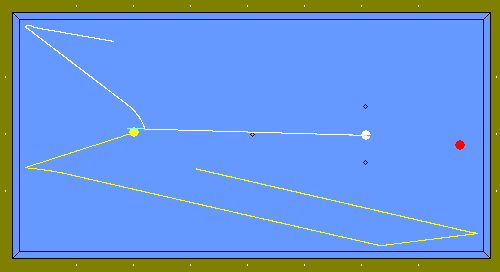 If the wrong rail is hit first. |
The following shot is nicknamed the inside umbrella. It is tough as you must hit two rails before you hit the object ball: fairly hard to judge accurately.
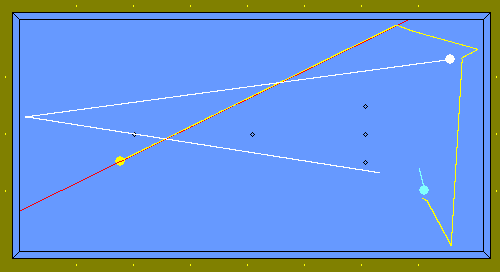
There is also the outside umbrella. I do not find it as nasty as the inside one.
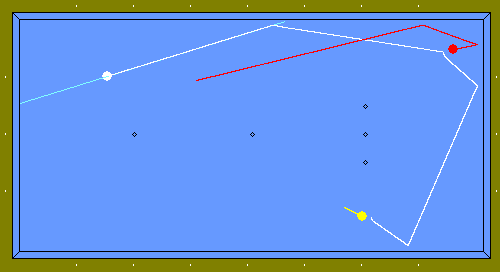
When the balls are close together, you are still allowed to go around the table.
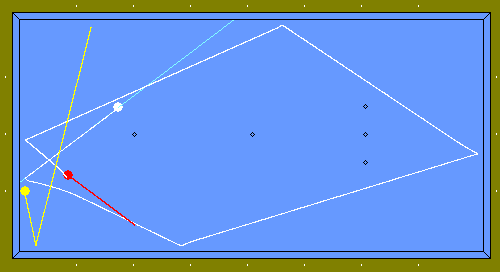
Time shots are shots were you get a kiss on purpose to reposition the second object ball.
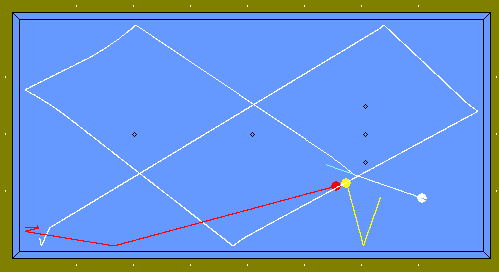
When an object ball is frozen to a rail it is possible to get a kiss on purpose.
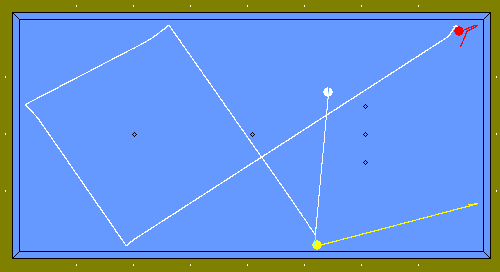
There is not much available in English. Robert Byrne is more or less the only American writing about three-cushion.
The figures were obtained using the simulation developed by Laurent Buchard (http://perso.wanadoo.fr/laurent.buchard.)
© Mathieu Bouville, November 10 th 2003